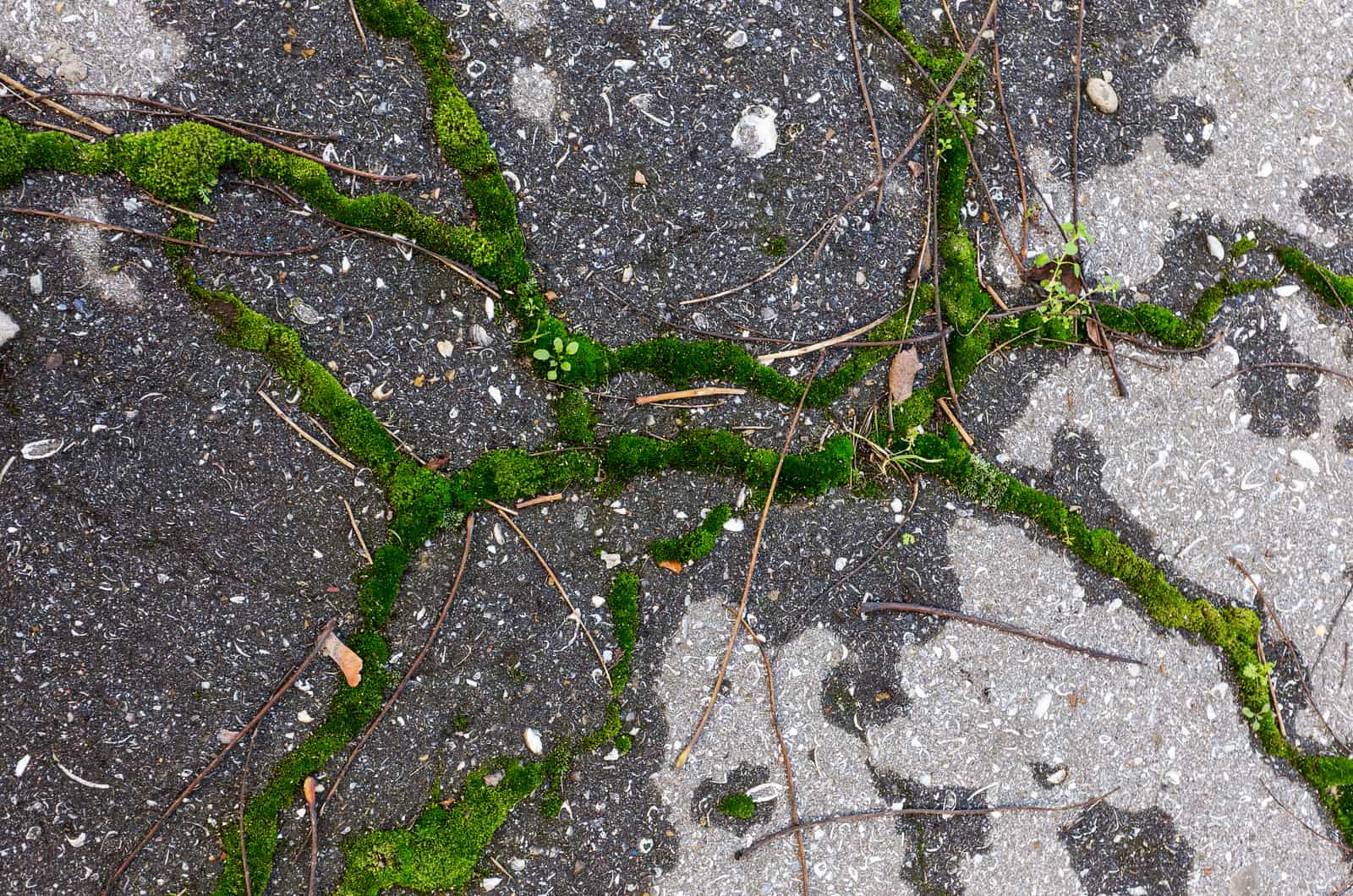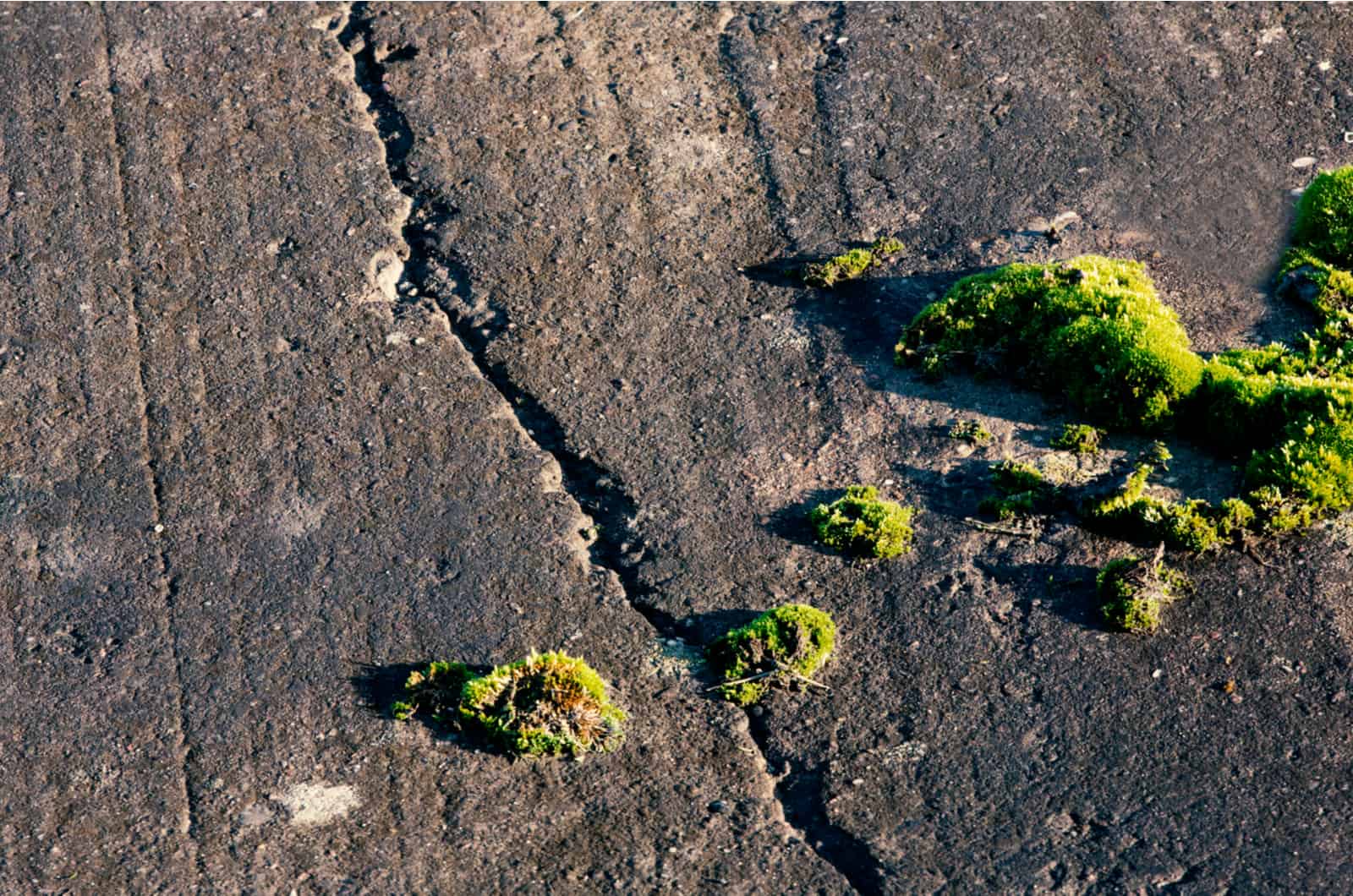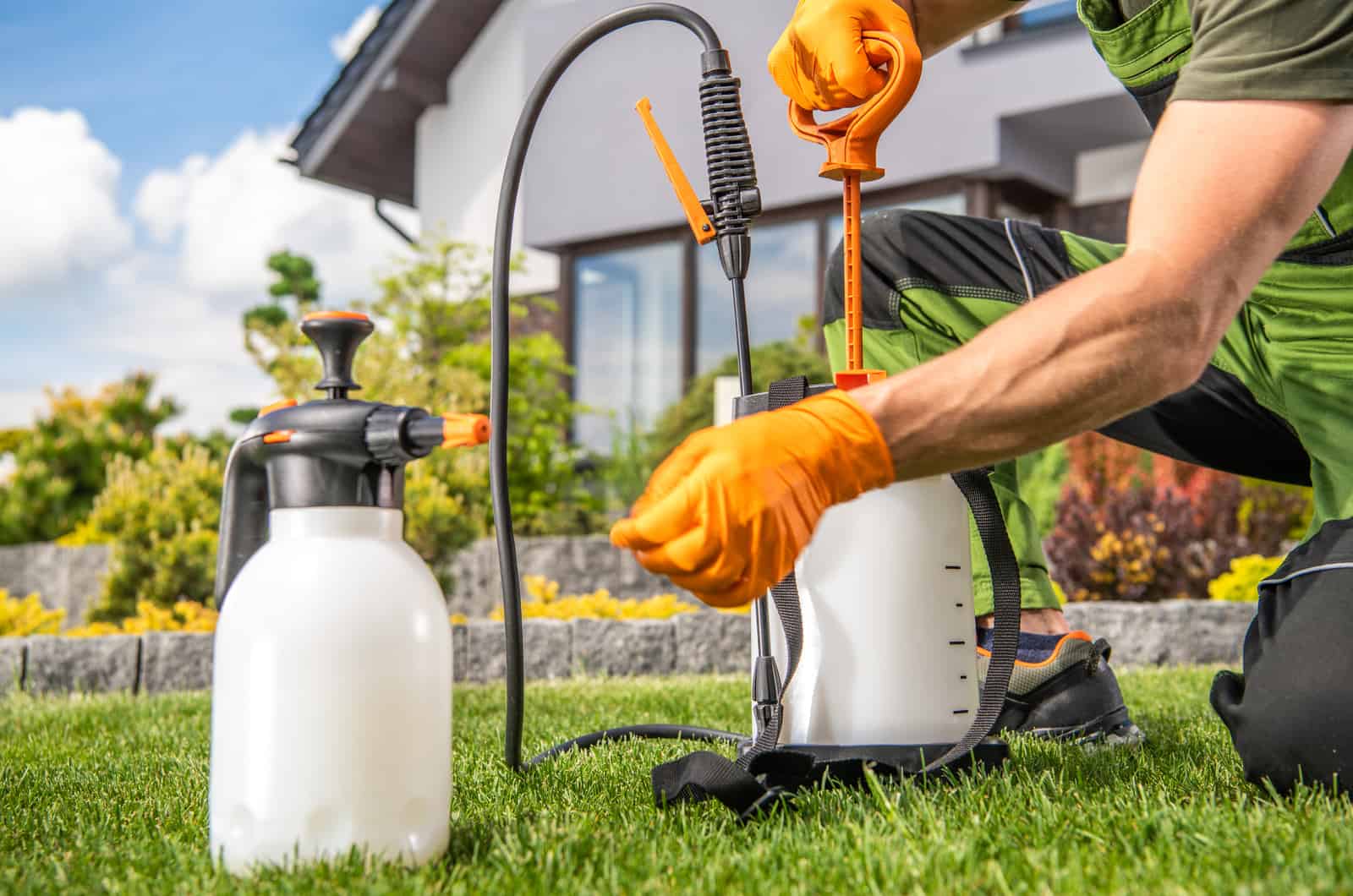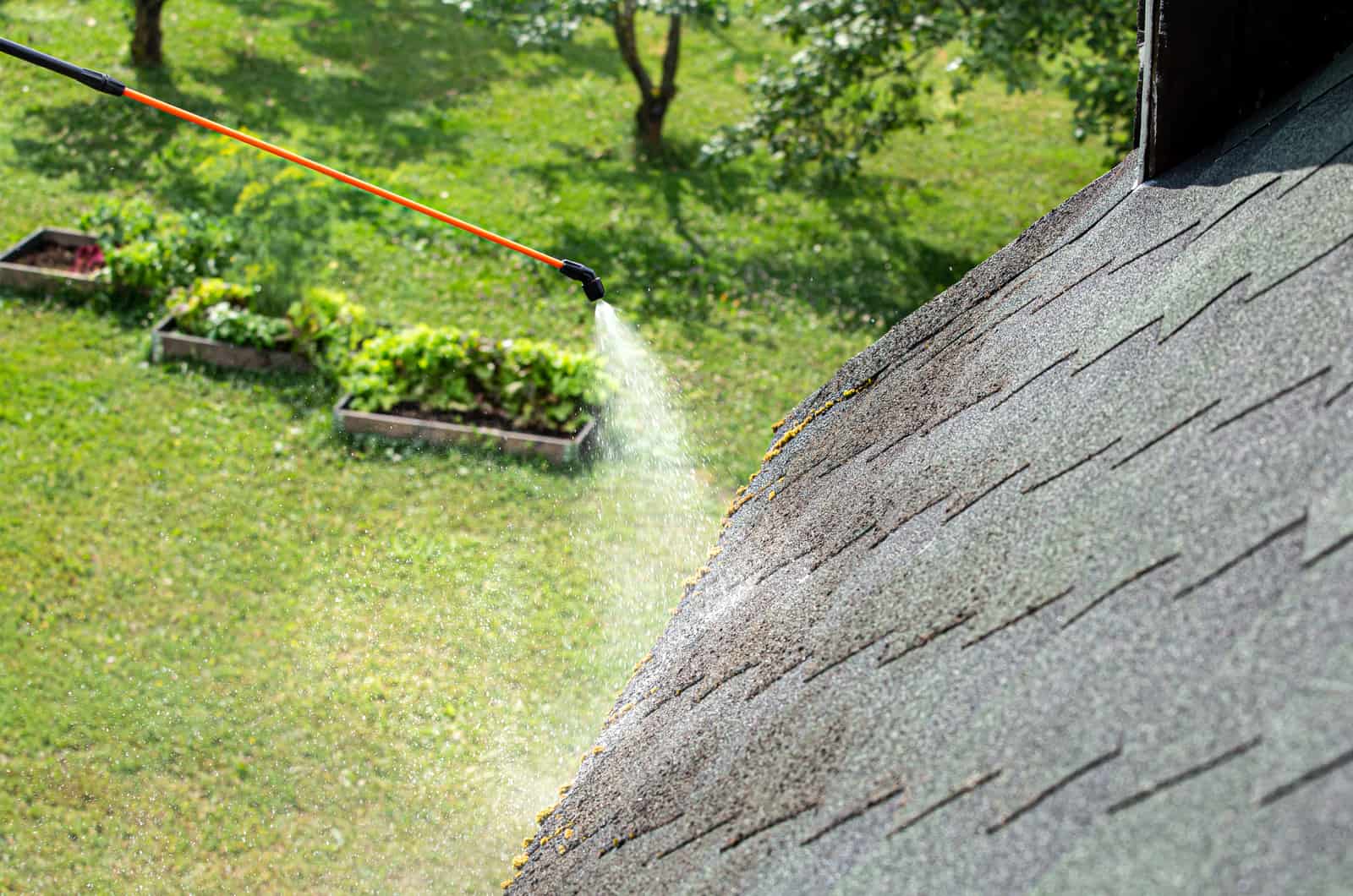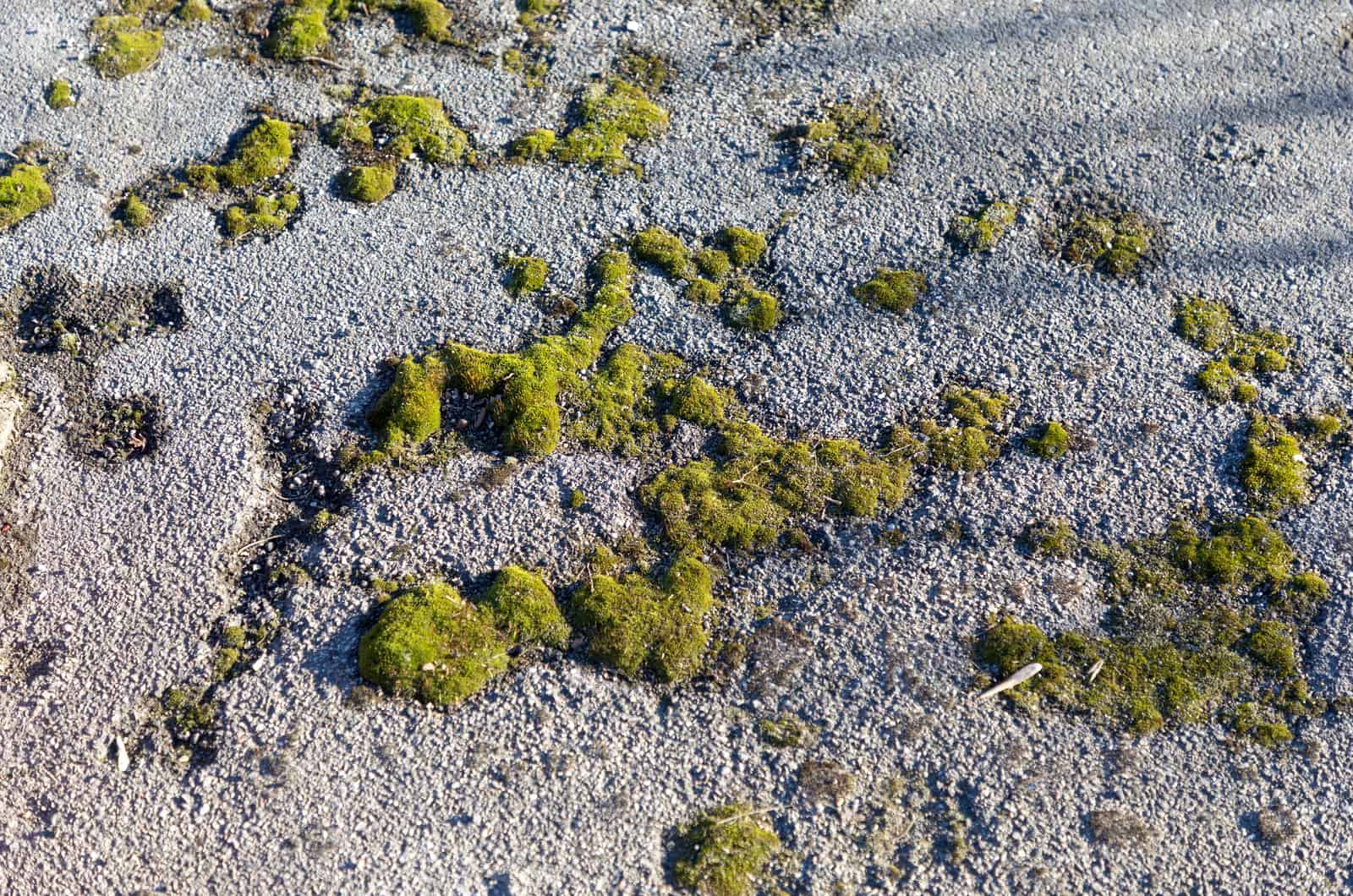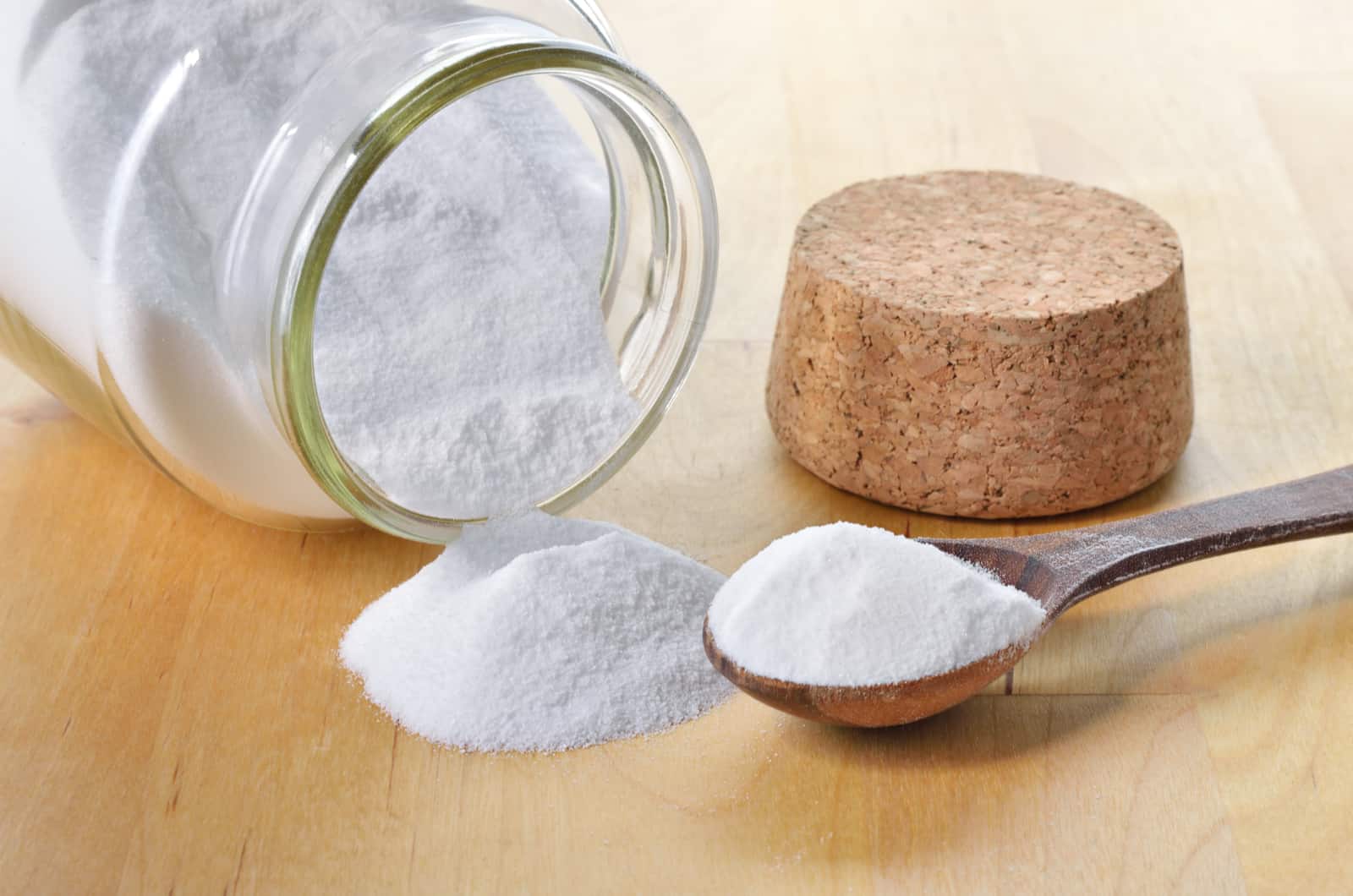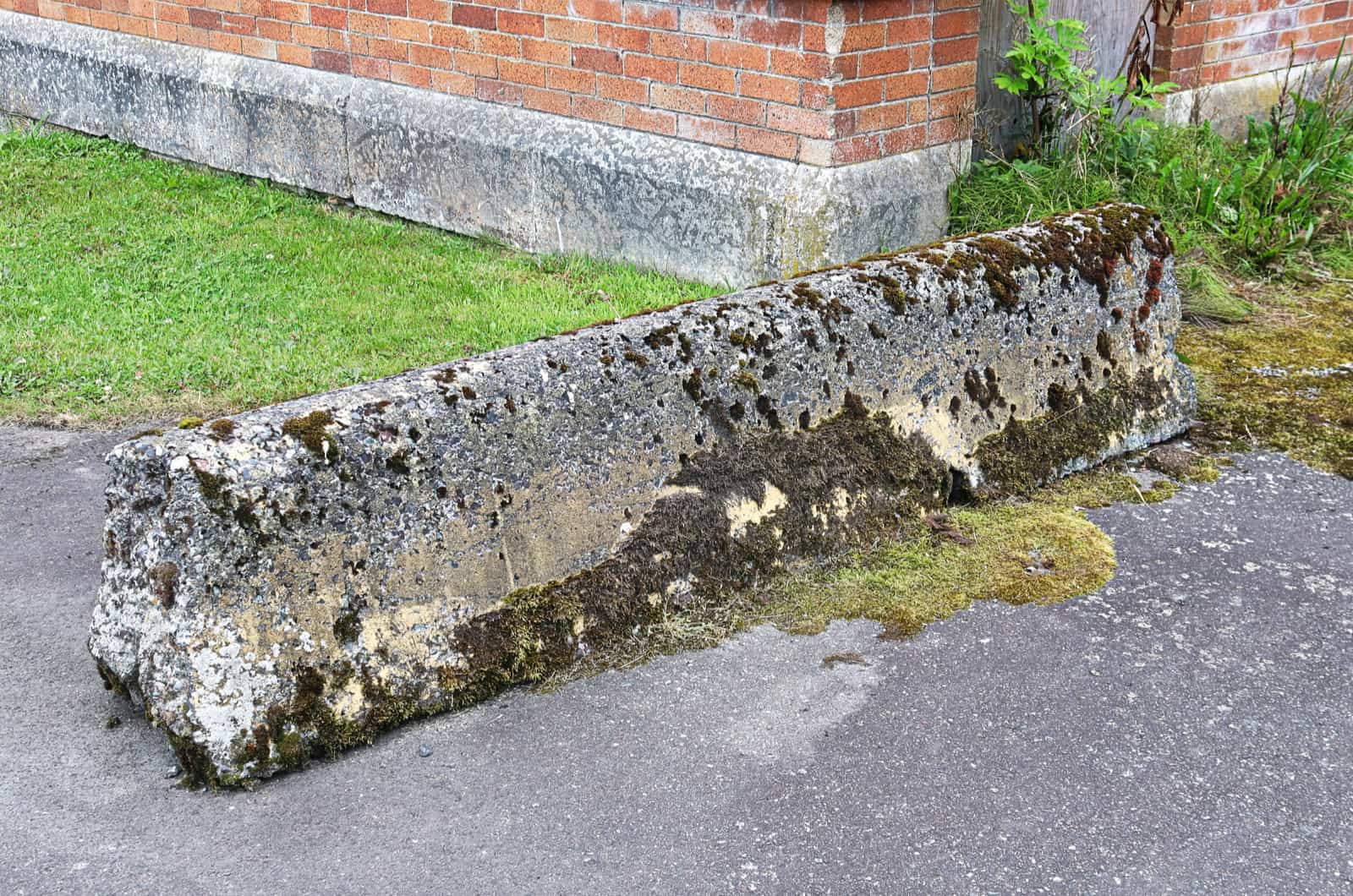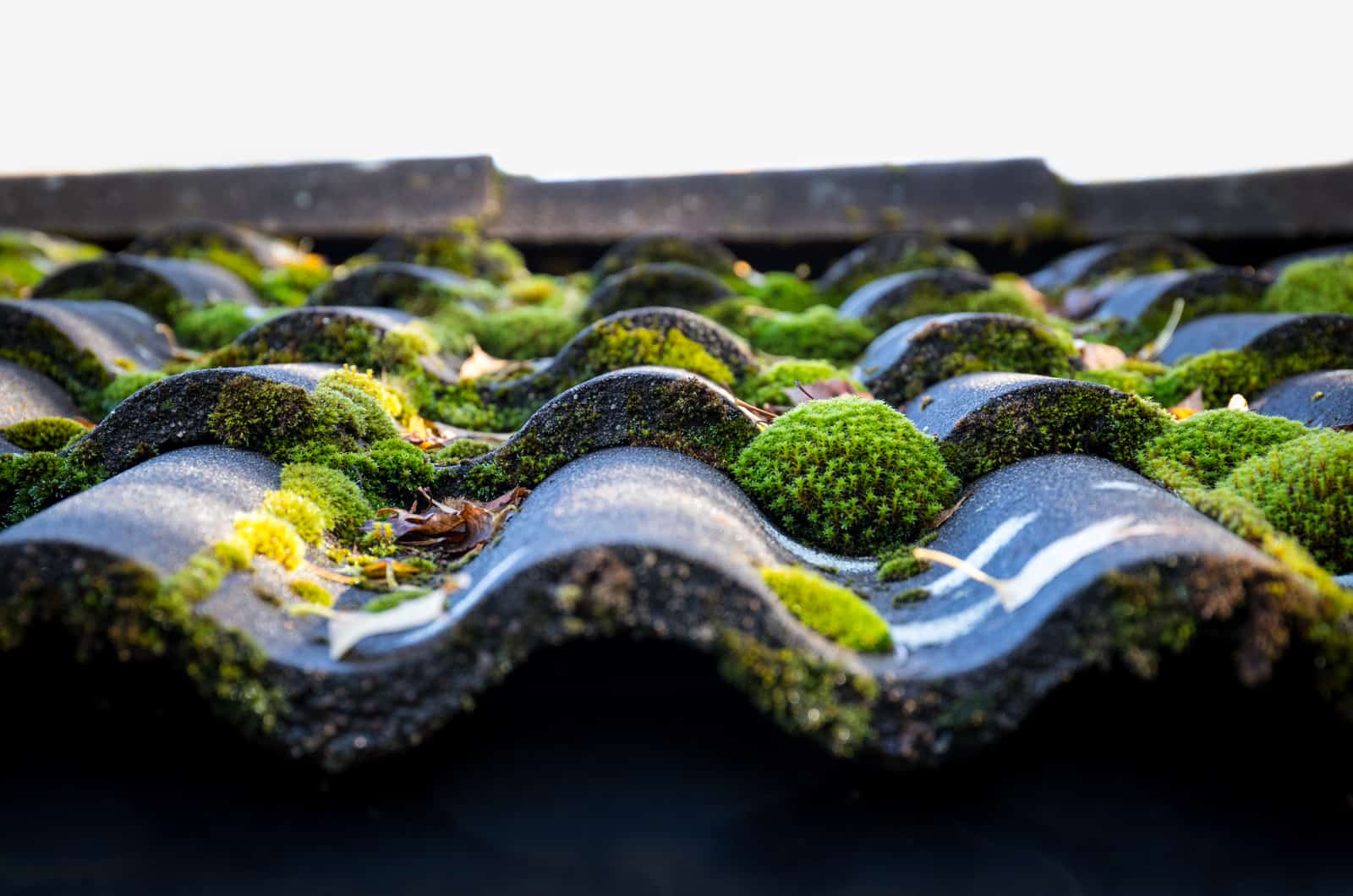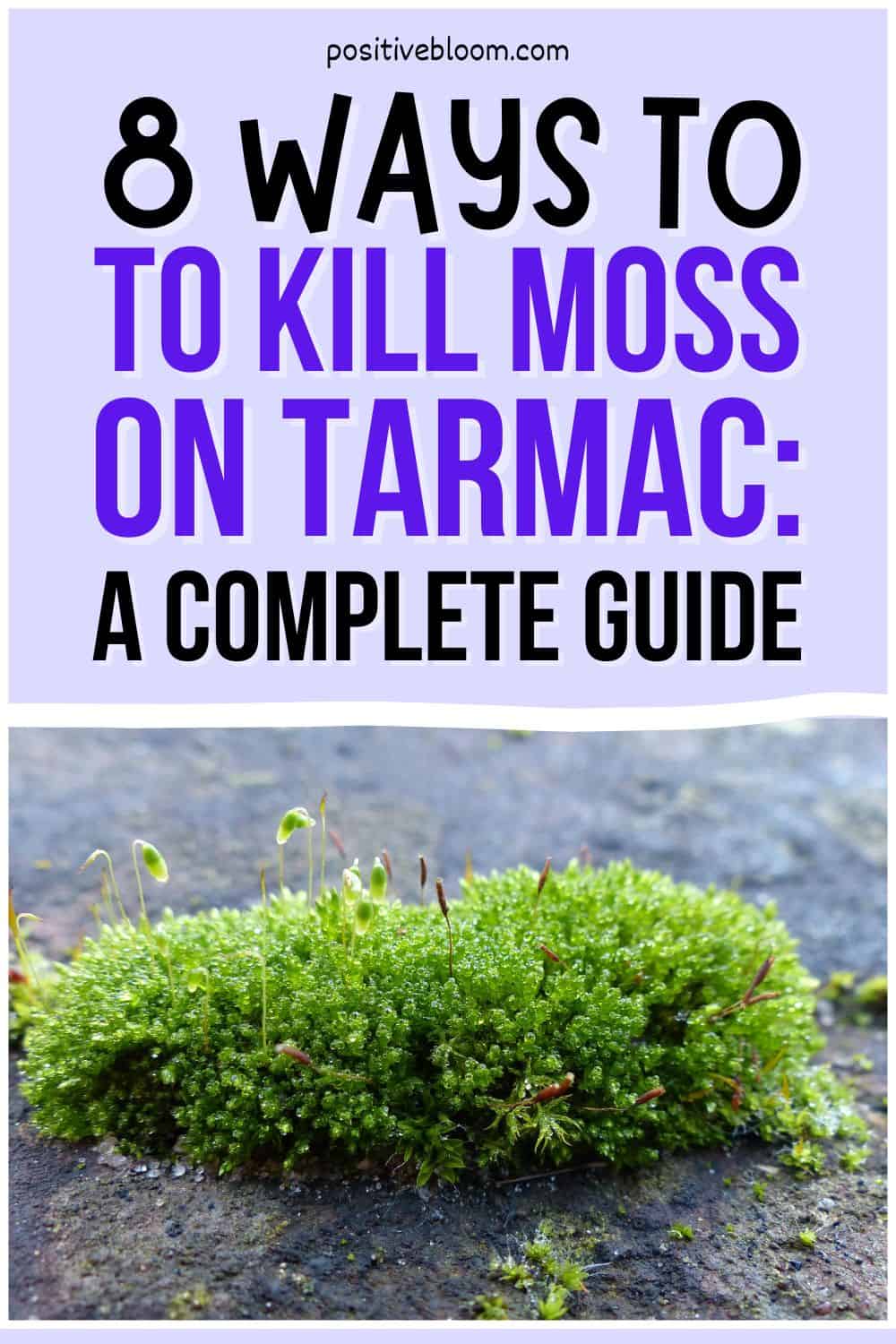Positive Bloom is an Amazon Associate and we earn from qualifying purchases through these links at no extra cost to you.
Moss is a sworn enemy of our driveways, and we have been developing new methods to eradicate it for decades.
The main reason we have decided to write this article is to help provide you with different ways that you can kill moss on tarmac.
There are many chemicals that will do the job effectively, but there are also some natural solutions that you may be more willing to try.
However, whichever solution you opt for, you need to approach your tarmac drive with caution so that you don’t leave any damage on it.
This article brings you the 8 most effective ways of moss removal from tarmac and everything you need to pay attention to.
Also, we realized that you might also have a problem with moss on your roofs and decks and thought, “Why not help you with that too.”
Let’s get started.
How To Kill Moss On Tarmac
There are various ways to kill moss on tarmac, and it really just depends on your preference as to which one you are going to use.
We bring you both chemical and chemical-free solutions, so you’ll have plenty of options to choose from.
However, before trying to remove the moss, first, you have to prepare the tarmac.
In this section, you can learn what exactly you have to do to get rid of moss once and for all.
Preparing The Tarmac
Preparing the tarmac for moss removal is almost equally as important as removing the moss.
Use a push broom to remove the dirt, small and loose sections of moss, and other debris that is growing on your tarmac driveway.
If there is a weed growing in the crevices, you need to kill it before starting to remove the moss. Use a weed killer to remove it, as the moss killer cannot destroy weeds.
In return, the weed killer doesn’t kill moss, so you will have to use both.
Finally, if there is anything that creates a shadow over your driveway, such as sunshades or branches of a tree, try to remove them because the driveway needs plenty of sunlight when fighting moss.
Moss thrives in moisture and shade, so you’ll have to make your drive unlivable.
3 Fantastic Chemical Solutions
We immediately start at the chemical solutions as they are considered more controversial.
We’ve been into landscaping for a while now and know that nothing beats a good pesticide or biocide.
However, you need to use them with caution, as you surely don’t want to destroy the flora around you.
This section explores the effects of bleach, biocides, and washing powder on your tarmac drives and their effectiveness in killing moss.
It has to be mentioned that iron sulphates are also great at removing moss, but they are known to stain the tarmac, which is why we don’t include them in our list.
1. Bleach
Removing moss with bleach is quite simple, and it costs nothing as you can use your regular bleach-based bathroom cleaner, and it works well on all hard surfaces.
Here are the steps you need to follow for efficient moss removal.
Step 1. First, you need to make a bleach solution. Dissolve 600 ml (20.29 fl. oz) in 23 L (6 gallons) of water. We use Domestos and Clorox, but you can use any bleach-based cleaner that is at your disposal.
Step 2. The second step is to put the solution into something that will make the dispersion easy. We use a garden sprayer as it ensures the best coverage, but if you don’t have one, you can always use a backpack sprayer or even a spray bottle.
However, a spray bottle may make it harder to spread the solution, but it will give you more control, and you won’t have to worry about damaging the nearby plants.
Step 3. Next, thoroughly spray the moss with the solution to make sure that no greenery will “decorate” your driveway.
Step 4. The bleach solution needs time to kill the moss, so you should leave it to soak for around 15 minutes before rinsing.
But don’t leave it to soak for too long because it can damage the tarmac!
Step 5. After 15 minutes, use a hosepipe to rinse away all traces of the bleach, preferably with lukewarm water.
But more importantly, rinse all traces of the solution as it can damage your tarmac drive and kill nearby plants if left for too long.
Step 6. Next, leave the tarmac to dry for a few hours. After some time, you should notice the color change; yellow moss means it’s dead and ready to be removed.
Step 7. Lastly, use a stiff brush to remove all the remnants of moss, and you’ll have a moss-free surface.
This technique is risky if you don’t follow all the steps and precautions. You shouldn’t leave the bleach on your tarmac for too long as it can cause lasting damage, which is why you need to be extra careful.
On the other hand, the fact that it only needs to sit for 15 minutes means that this method is quite time-saving.
And while the tarmac dries, you can do other things around your garden and come back to check the drive some time later.
2. Biocides
We always dread using chemicals for fear of causing lasting damage. However, if they are used carefully, biocides can be your greatest ally in the fight against moss.
This section will discuss the use of Jeyes fluid, our favorite (and probably most effective) biocide.
Jeyes Fluid
Jeyes fluid is a disinfectant that is relatively easy to use. It kills moss and mildew efficiently, but you should repeat the following treatment in a month for optimal results.
Let’s look at the steps!
Step 1. The first thing you need to do is dilute the Jeyes fluid so that it doesn’t stain or damage your driveway. We usually need to dilute half a liter (16.9 fl oz) in 20 L (5.2 gallons) in order to soak the entire area.
However, if you don’t need that much, the general rule is to dilute 125 ml (4.2 fl oz) of Jeyes fluid in 5 L (1.3 gallons) of water and then work from there.
But, before you spray the entire area, test a small part of your tarmac. If the tested area softens, you should dilute 60 ml (2 fl oz) of Jeyes fluid in 5 L (1.3 gallons) instead.
Step 2. We usually need a garden sprayer to disperse the solution, but if you have only a small area to cover, you can use a watering can.
Make sure you cover the entire tarmac surface with the solution and that all the moss is soaked.
Step 3. Leave the solution to sit and soak for about 15 minutes to ensure that all the moss has been killed.
Step 4. Afterwards, rinse thoroughly and use a stiff broom to remove the dead moss.
Jeyes fluid is an effective moss killer, but you need to be careful when using it as it can cause damage to your tarmac.
However, if you follow the instructions, you should have no problems whatsoever.
Also, this method is time-efficient, and the entire process can be done within 45 minutes or less, depending on the length of your driveway.
Baticlean CR
Baticlean is our favorite biocide that inhibits moss regrowth. Its use is pretty straightforward, and you can combine it with other removers.
Use a stiff broom to remove as much moss as you can before spreading Baticlean on the affected area.
After brushing, simply spray the Baticlean CR onto the surface and leave it to do its job. The good thing about this moss killer is that it doesn’t need to be rinsed off.
In fact, it shouldn’t be rinsed as it kills spores and prevents regrowth.
However, you need to ensure that you spray the Baticlean CR on a dry surface on a dry day when there is little to zero chance of rainfall.
Baticlean kills moss, algae, and spores within 2-3 days, and water can prevent this.
However, keep in mind that Baticlean CR is a potent biocide, and it should be diluted at a ratio of 1:4 in favor of water.
3. Washing Powder
Washing powder is another thing that you always have around, so you don’t have to spend any extra money on it.
This method is cheap, doesn’t cause any damage to the tarmac driveway surface, and is safe to use around lawns and plants as it won’t cause any lasting damage.
All you have to do is spread some washing powder on the mossy areas, and you’re done. You don’t even have to wash it away as the rain will take care of it, so it wouldn’t be such a terrible idea to pick a week when the certainty of rainfall is high.
However, washing powder takes 3-4 days to kill the moss, so it’s not really time-sparing.
You can also mix washing powder with water and spray it over the moss affected area. Leave it to soak for some time, and after the moss has started to change color, this means it’s dying, and you can go ahead and rinse the tarmac with warm water.
Then, all you should do is take out your push brush and remove the dead moss.
Here’s a video that can guide you through the process if you’re using washing powder to clean your tarmac drive for the first time.
5 Natural Solutions For Killing Moss
We have had many homeowners asking us how to hinder the growth of moss without using strong chemicals that may hurt their plants and lawns.
Therefore, we have made a list of our 5 favorite, natural ways of dealing with moss.
1. Pressure Wash
Pressure washing is a great natural solution to moss and algae. You simply have to turn on your pressure washer and remove all evidence of moss, as the pressure from a hosepipe is usually not strong enough.
Pressure wash is a great way of removing moss and algae, together with their roots, so you won’t have to worry about moss regrowth for a while.
However, you need to brush away all the remnants of uprooted moss for a clean drive.
Pressure washing is a quick way of dealing with a moss problem, but you have to be careful not to scar your tarmac.
Here’s a link to our favorite pressure washer:
[lasso id=”2365″ link_id=”266″ ref=”amzn-sun-joe-spx3000-2030-max-psi-1-76-gpm-14-5-amp-electric-high-pressure-washer-cleans-cars-fences-patios”]
2. Boiling Water
Boiling water is an excellent solution to your moss problem and is probably the safest one for the environment.
It might take some time to boil enough water (especially if you have a long driveway), and you need to be extra careful not to burn yourself.
However, if you can get past all these issues, your drive will be more than grateful to you. Simply pour the boiling water over the moss and wait for it to do its job.
Afterward, brush the remaining moss, and that’s it. This method has always worked for us and has never damaged our driveways, but it does take some time to soak the entire area in it.
3. Sun Exposure
Moss growth is encouraged by shaded and moist driveways, so you should try and remove all sun blockers that prevent direct sunlight from drying out the moss.
This method is probably the easiest as you don’t have to do anything to get rid of the moss; the sunlight does it for you.
However, you do need to remove the dry and dead moss afterward, so keep a stiff brush at hand.
This method, if we can even call it a method, is time- and cost-efficient, and it doesn’t do any damage to the tarmac.
4. Baking Soda
Baking soda is an ingredient that is found in every home. It is an excellent cleaning supply and is great for cleaning tarmac as well.
It doesn’t damage the tarmac surface, and it even makes it safer to walk on as it kills other microorganisms that may be found on it.
There are two ways of using baking soda to get rid of moss, and we’ll describe both of them.
Baking Soda Powder
If you’re using dry baking soda, you simply have to spread it on the entire affected surface that you have previously dampened.
This is probably the easiest and the least time-consuming method, as you don’t have to make any extensive preparations; it’s safe, and it doesn’t stain!
After spreading the baking soda, leave it to absorb the moisture and dry out the moss. It might take some time, but it’ll get there, we promise!
When the moss has dried and changed from green to yellow or brown, you can brush it or wash it away with a pressure washer.
Baking Soda Paste
To make a baking soda paste, you need to mix the baking soda with enough water to get a thick mixture. It is mildly alkaline, meaning it will dry out any moss, given time.
Spread the paste over the area affected by moss, and let it sit for about 2-4 days before washing it away with a pressure washer or a hose.
Baking soda paste takes some time to work and get your tarmac into a pristine state, but it is quite efficient, and you almost don’t need to do anything.
This method is really safe and doesn’t present any danger to your driveway. However, don’t use too much baking soda as it may leave stains on the tarmac, and remember to rinse it thoroughly.
5. Vinegar
As you might have noticed, we love DIY methods that kill moss on tarmac, and we have saved another one for last.
Using vinegar is another easy-to-do method, as you simply have to dilute vinegar in water (the ratio is 1:1) and soak the tarmac affected by moss in it.
Let it sit for about 15-20 minutes, remove the moss with a stiff brush, and repeat this process for a week for optimal results. Wash away the vinegar mixture with plenty of water, and you’ll have a tarmac you won’t be ashamed of anymore.
This method is time-consuming, but it will get rid of moss in a natural way, and it doesn’t cause any serious and lasting damage to the tarmac.
Why Moss Grows On Tarmac Driveways
Tarmac drives are pleasing to the eye, and they only accentuate the beauty of your front yard and your landscaping skills.
But, who hasn’t found themselves trying to read a good book or relax some other way and been distracted by hideous moss on your driveway?
You might have wondered why it keeps happening to you, and we’re here to tell you that you can stop your wondering as we have the answer.
The reason for moss growth is usually the structure and texture of the tarmac. Tarmac is rough and it retains moisture, which is why it is a perfect breeding ground for moss, lichen, and mold.
This structure also provides moss with protection, somewhere its spores can hide and regrow if you remove the moss.
Another reason for your moss problem might be a lack of sunlight. Have you noticed that the place where you park your car has more moss than the rest of the driveway?
It’s because it doesn’t get enough of the sunlight which dries out moss!
Best Time To Kill Moss
The best time to kill moss on tarmac is during its growing season when it’s actively growing.
This period usually encompasses fall, warm winters, and early spring, when there is plenty of rain and not enough sunlight to dry out the moss.
3 Ways To Prevent Moss From Coming Back
So far, you know many different but almost equally efficient ways of killing moss. But what if we tell you that there are ways to ensure that the moss doesn’t come back?
It sounds like a dream, except it’s not!
We bring you 3 efficient ways of preventing moss from regrowing on your tarmac driveways, but the most efficient method is to combine all three.
Let’s take a look!
1. Use Moss Killers
Moss killers such as Baticlean CR are great at killing the spores and preventing their regrowth.
You should use moss killers even if the tarmac surface is not covered in moss, as there are surely spores there that your naked eye can’t see.
For that reason, we recommend using biocides that prevent regrowth, once a year, and you won’t have to bother with extensive brushing and scrubbing.
2. Ensure Direct Sunlight
Another thing you should pay a lot of attention to is ensuring that your drive is directly exposed to sunlight since moss cannot survive in direct sunlight.
You can provide direct sunlight to your drive by removing all the trees and shrubs that block it. Of course, you don’t have to cut the trees down, but moving or planting them where their shadow can’t reach your drive will make a tremendous difference.
3. Brush The Tarmac Drive
Finally, you can regularly sweep your tarmac drive with a stiff brush and remove moss in its early stages.
This method will save you from a lot of trouble later on. However, this doesn’t prevent the regrowth of moss, but it keeps it at bay, and you won’t be spending much time cleaning your drive in the future.
Does Moss Harm Tarmac?
Moss is not just an unsightly problem that you can’t ignore; it also harms your tarmac more than you think.
Its roots get more extensive as it grows, and they spread into the tarmac. This causes cracking and damages the seal coat, making your driveway look like it has been through a war.
These cracks only retain more water, making the environment for moss growth even more favorable.
However, it is also important to add that moss can hurt you if you ignore it. It makes the walking surface slippery, and you can really hurt yourself if you’re not careful.
Therefore, if you don’t want to dread hurting yourself every time you go outside, you should remove it.
How To Remove Moss From Roofs And Decks
Moss is not a problem only limited to tarmac driveways; it can mar the roofs and decks of houses, making them look old and neglected.
Removing Moss From Roofs
You can remove moss from the roof by using moss killers or by spraying it with the water from a hose and removing it little by little with a soft-bristle broom.
You need to work in small sections and be rather careful not to damage the roofing tiles.
Also, don’t use a pressure washer as the water pressure is too strong and will only damage the tiles.
Here are some tips for dealing with the moss problem on your roof.
Removing Moss From Decks
There are many different methods of moss removal for your deck, which will all restore it to its former glory.
Our first choice would be using a vinegar solution, but you need to highly dilute it before washing your wooden deck with it. We always use the 1:16 ratio and have never had any problems.
Also, you can use biocides and moss killers if that is your preference. We never run away from these chemicals, but you need to be very careful when using them so that you don’t cause any permanent damage to the nearby flora.
Finally, if you don’t want to use any potentially harmful products, you can use a good old pressure washer which will leave your deck squeaky clean.
To Sum Up
What we have aimed to show you is that there are many different ways to kill moss on tarmac, and you simply have to find one that suits you and your needs.
However, if you’re like us and love experimenting, you can try all of these methods and use them interchangeably.
This article has brought you both chemical and chemical-free solutions that you can use to clean your tarmac driveway.
However, you need to be careful if you’re using chemicals to remove moss as they can cause serious issues to the tarmac itself and the plants and lawn around it.
Also, all these methods work, but if you want to make your job easier, you can try to prevent moss from growing in the first place. You can ensure this by providing direct sunlight to your driveway and using moss killers regularly, that is, once a year.
Finally, we know that everyone has struggled with moss on their roofs and decks at some point in their lives, and we have brought you a few tips on how to deal with this as well.
Good luck with cleaning, and until next time!
Like this post? Share or pin it for later!

